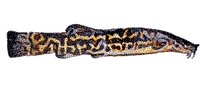I have very bad news. My plecos are dying.
It all started with a water change round about 40% on thursday. While I was at it, I moved some of the sand the plecos had faned up to a huge mountain in front of their caves away so I would have better vision into their caves again. I noticed one young L333 sitting on a anubia leaf, they usually hide in their caves, but with my L333s it's not too uncommen to see one outside and exploring the tank.
The tank is for growing out 6 L333, 5 L260 and 6 L134. All at about 4-6cm in total size.
The next day I noticed more L333 sitting in the open. Right in the light. They were no longer hiding from the light. I knew something was off. I kept watching for a while and when a young L260 shot through the tank, spinning around uncontrollably, I was really frightened. I did a 50% water change. Before the water change i tested for nitrite: 0.0mg/l. Nothing seemed to change after two hours and so I did another 50% water change. I added additional aeriation. I noticed a lot of very very small white worms sitting on the glas and swimming around as well. There have always been some like those in my tanks. They are so small. And I never had any problems with them up till now. So I wouldn't bother. But now there are soooo many of them in the tank. I knew something must have gone terrribly wrong in this tank since the day before.
I waited some more to see if the water change had any effect. It looked like it got even worse. more and more of the youngsters started to swim uncontrolled against the glas or against each other. There are some endler guppy males as well as some cherry shrimp in the tank. both of them seem to be fine up till today. Nothing to be noticed on them.
I decided to place my bets on those plecos. I would swap them into another, bigger tank with other plecos that are fine and healthy. What if they had a disease and all of the healthy plecos would be infected as well? hmm... I didn't want to think about that. After all waterchanges seemed to be not good enough and the raising numbers of "glasworms" indicated something being terribly wrong in this tank. I came to the conclusion it wouldn't be a sickness of any kind, since all of them had the same signs all at once. It just came to quick for a disease. I assumed a poisoning, so bad that waterchanges couldn't help.
I caught them. poor little fellows. some of them didn''t even try to flee from my hand. some even sucked on to my hand. They were in terrible condition.
Once in the new tank, nothing seemed to have changed.
Sadly I had to leave them alone for the weekend (saturday morning till sunday evening). I hoped they would be fine with "better" water in the bigger tank.
As I just came back home. I found 4 of the 6 L333 dead. It's heartbreaking taking those liveless little bodies out of the tank. the 5 L260 and 6 L134 seem to be still alive.
But symptoms are still the same:
- High breathing frequency
- lying apathetically in the open, even in the light. Not hiding.
- lying on the ground, they are not up at the top. so probably not suffocating. O2 is fine. Nitrite 0.
- shooting around like torpedos. some of the bigger ones have scratches on their noses from swimming against stuff.
- spinning around.
Guppy and cherry shrimp still fine in the "old" tank. residents of the new tank still fine as well.
The water in the old tank is NOT smelling bad. Well it smells like a tank does. But not like something was rotting in there. No bubbles coming up from the sand.
here some more specs:
1. Water parameters
a) Temperature range: 28°C
b) pH 6.5-7
c) GH 2°
d) KH 2°
e)Ammonia: I don't know
f) Water change frequency twice a week with 30-40%.
2. Tank set up
a) Size. 80x40x40 cm
b) Substrate. Sand
c) Filtration. Mattenfilter, air driven.
d) Furnishings.
e) Other tank mates. Guppy + cherry shrimp, both unaffected of illness.
f) How long has it been set-up? 8Months.
g) When was the last new fish added? no changes for some months.
h) Foods used and frequency? Sera viforma, frozen foods(black mosquito larvae, krill, brineshrimp) sometimes zucchini/cucumber/potatoe.
3. Symptoms / Problem description
- High breathing frequency
- lying apathetically in the open, even in the light. Not hiding.
- lying on the ground, they are not up at the top. so probably not suffocating. O2 is fine. Nitrite 0.
- shooting around like torpedos. some of the bigger ones have scratches on their noses from swimming against stuff.
- spinning around.
- dying
4. Action taken (if any)
2 Waterchanges 50%
moved them to another tank.
5. Medications used (if any)
none.
This is the first time plecos are dying on me. It is killing me! I love those tiny fellows.
Could this be an ammonia poisoning? Shouldn't they get better with waterchanges and a new tank without ammonia problems?
Any inputs? I don't want to see them suffer





